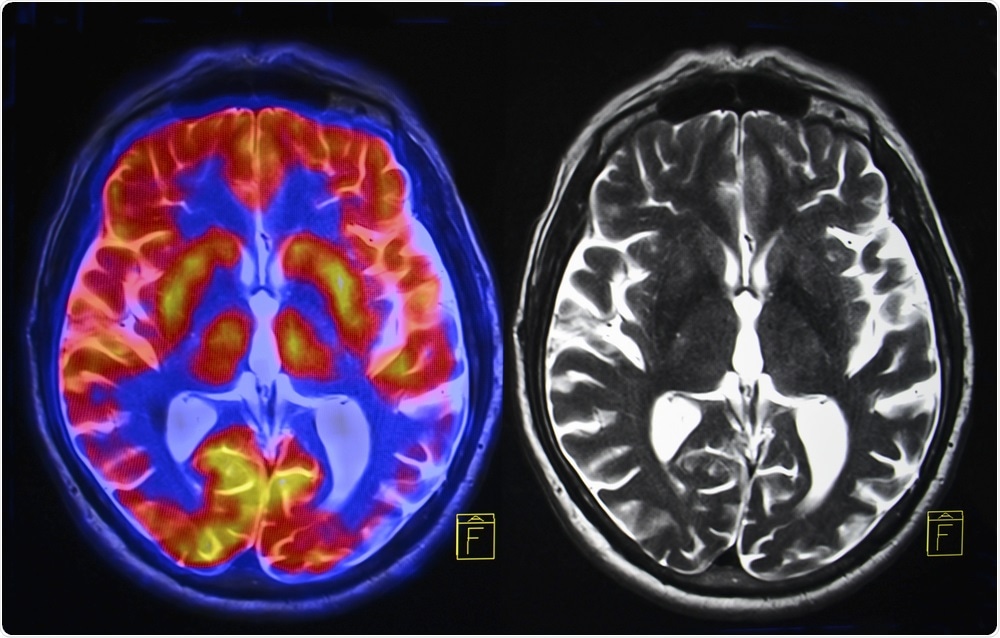
New type of dementia is '100 times more common' than ALS
Physicians have defined a new form of dementia that may be more common than Alzheimer’s disease. The findings were published in the latest issue of the journal Brainand involved researchers from around the world, including the United States, Australia, Austria, Sweden, Japan, and the United Kingdom.
 Semnic | Shutterstock
Semnic | ShutterstockThe researchers have named the new condition “LATE”, which stands for “Limbic-predominant age-related TDP-43 encephalopathy”. LATE is slower to progress than Alzheimer’s disease, but the two conditions show similar symptoms. There may, however, be further, undiscovered effects of LATE on the brain compared to Alzheimer’s disease.
The team explain that in some persons both conditions may coexist. In these individuals, there may be a faster and more marked decline in the cognitive abilities than when either of the conditions are present in isolation.
‘Overhauling the concept of dementia’
The paper says that the newly defined condition is speculated to have “an expanding but under-recognized impact on public health.” The team hopes that this study would spur research looking into this disease that generally affects people aged 80 and above.
Lead author Dr. Peter Nelson, director of neuropathology at the University of Kentucky Medical Center said, “We're really overhauling the concept of what dementia is.”
The researchers explain that the disease and its diagnosis did not appear suddenly. Instead, evidence has been building up for many years. There were always cases and reports that described symptoms which did not fit into any of the known types of dementia, with experts saying that no single form of dementia could explain certain symptoms. While some people lost their language abilities first, others lost their memories and experienced personality changes instead.
LATE affects the limbic area of the brain, through a protein TDP-43. Protein misfolding is not uncommon in neurodegenerative diseases, as emphasized by the involvement of the protein’s tau and amyloid in Alzheimer’s disease.
In LATE, TDP-43 is misfolded and modified. It is most commonly observed in regions where Alzheimer's-associated proteins are not found. Experts say that the protein itself, as well as its location, is what defines the condition as different to Alzheimer’s and other forms of dementia.
‘The whole elephant’
TDP is known to be implicated in amyotrophic lateral sclerosis (ALS) and frontotemporal lobar degeneration (FTLD). This association has been established for a decade now.
Dr. Peter Nelson says that LATE is a “disease that's 100 times more common than [ALS or FTLD), and nobody knows about it.” The authors speculate that around 20 to 50 percent of the people aged over 80 years have significant brain changes that are associated with LATE, and the prevalence of this condition rises with age.
Up until now, clinical trials for drugs against Alzheimer’s disease have shown little to no success. This could be because a sizable portion of the participants could be suffering from LATE rather than Alzheimer’s disease.
However, opinion on this matter is divided: “I'm sure it plays some part, but maybe not as much as one might think at first,” said Silverberg.
“We could go back and screen all the people that had failed their Alzheimer's disease therapies. But what we really need to do is go forward and try to get these people out of the Alzheimer's clinical trials - and instead get them into their own clinical trials,” said Nelson.
The new study could act as a roadmap in research in dementia, but this is not likely to happen soon: “It's probably going to take years and research participants to help us understand all of that,” said Silverberg.
Promoting awareness
Authors have identified five genes that increase the risk of LATE. These include, “LATE-NC: GRN, TMEM106B, ABCC9, KCNMB2, and APOE.” The pathogenetic mechanisms associated with LATE are similar to that of “frontotemporal lobar degeneration and Alzheimer’s disease.”
It is now hoped that the study will pave the way for research into late, with the authors encouraging awareness: “It is important to promote awareness in multiple scientific areas and to focus on translational and interdisciplinary approaches.”
What is TDP-43?
TDP-43, also known as “transactive response DNA binding protein of 43 kDa”, is a protein that usually helps in regulation of gene expression in the brain and other tissues. Recent studies have revealed that misfolded forms of this protein can be found in as many as 25% of adults over 85 years of age. Misfolding of TDP-43 leads to alterations in memory and cognitive abilities, much like Alzheimer’s and dementia.
When looking at TDP-43 aggregates (clumps), the team noted that it was present either only at the amygdala region of the brain (Stage 1 LATE), in the amygdala and the hippocampus (Stage 2 of LATE) or in the amygdala, hippocampus and middle frontal gyrus (Stage 3 of LATE).
The hippocampus is the area of the brain responsible for memory and learning. Misfolded TDP-43 protein has been seen to cause sclerosis or hardening and cell death in the reason of the hippocampus. This is accompanied by hippocampal shrinking. This pathology is associated with AD.
Alzheimer's Disease-Related Dementias (ADRD) Summit 2019 will soon take place, where it is almost certain that LATE and TDP-43 will feature as an emerging topic of interest.






















.jpg)












No hay comentarios:
Publicar un comentario